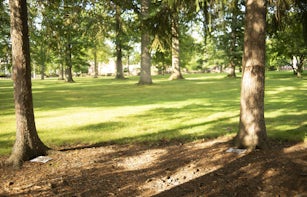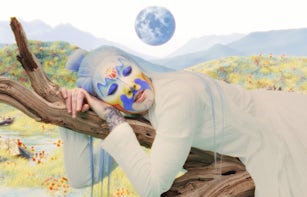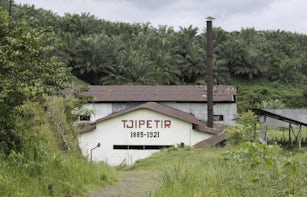
Dineo Seshee Bopape’s multimodal practice brings together diverse materials – soil, ash, video mixers, gold leaf, candles, petrol, flowers, feathers and sound – to address memory, land and occupation in relation to the lived experiences of black people. Through video works and, more recently, large-scale immersive installations, she engages Afro-diasporic spiritual practices – primarily those that are linked to revolutionary endeavours – as a means to conjure the eradication of anti-black worlds. Bopape’s installations employ an intense physicality in order to articulate the continued dispossession of black people from their land, as well as the continuing forces of healing, emancipation and refusal. In the entrancing sa ___ ke lerole, (sa lerole ke __ ) (2016), for example, large quantities of compressed soil are composed into huge geometric shapes in which the artist plants materials such as herbs, ash, charcoal and gold leaf conceived as shrines to different Afro-diasporic events and practices such as appeasing ancestors or spiritually-led revolutions. Yet it is Bopape’s earlier uses of digital video – a medium often associated with immateriality – that is of particular interest to me. For it is in these seemingly ‘immaterial’ works, such as is i am sky (2013) that these questions of land and landlessness originate.

Struggle Song as Black Battle Cry
is i am sky is ushered in by an intermingling of the artist’s voice and the sound of drums, wind and sea. These sounds, synchronised with the artist’s face and a landscape in which she walks, draws us into a world between two worlds folded within one another ad infinitum. The artist is singing ‘Hamba Kahle Mkhonto’, a struggle song from apartheid-era South Africa. The face is shot from below, reminiscent of socialist realist monumentalisation, and flows digitally between concreteness and translucence. We see a clear blue sky with birds flying, before, suddenly, the frame is filled with a spillage of black – across the sky and across the surface of the video. This spillage is the beginning of a continuous refraction, recombination and abstraction: the artist’s semi-transparent smiling face takes over the picture plane; through it, we see the sky and other shots of the artist. The border of the face becomes a gateway into multiple places, temporalities and modes of being. Face, sky and landscape merge: the sky takes on the shape and characteristic of the landscape; the landscape takes on the characteristics of the face; the sounds continue and the artist continues to sing.
‘I was trying to find a way of marrying the sky’, says Bopape. ‘I was wondering what shape the ceremony would take.’ 1 The cosmic ceremony is suggested by a moment of rupture halfway through the video – a sudden carousal of flashing colours and shapes is accompanied by a change from the drum riff to a piano solo, marshalling in an eerie, otherworldly mood. We slowly leave the world of face, landscape and sky for an inundation of stars, sun and cosmos. This world is represented by a sea of cascading, seizure-inducing arbitrariness, abstractions and distorted sound. The colour black, which fights to form the base of this cosmic representation, is continually encroached upon by a vast array of primary colours insistently flashing across the picture plane. The effect is one of chaos, confusion and disorientation. A sea of kaleidoscopic colours fights against the encroaching black colour and resurgent imagery of face-land-sky. Overall, the video’s deliberate overuse of videographic and sonic editing systems constructs an alternate existence where the memories of black people are made visible and given space to unfold.
is i am sky has its origins in a residency the artist undertook in 2011 at the Headlands Center for the Arts in San Francisco. Bopape heard news of an ongoing court case in South Africa against then African National Congress Youth League President Julius Malema, who was on trial for singing a contentious struggle song, ‘Ayasaba Amagwala / dubuli bhunu’ (‘The cowards are scared / Kill the Boer (white farmer)’).01 The situation clearly echoed apartheid policing of black expression, experience and memory. Hearing this news, Bopape set out into the San Francisco landscape singing ‘Hamba Kahle Mkhonto’, a struggle song that was widely sung at the funerals of those who died at the hands of the apartheid police and government. is i am sky thus connects these springs from the persistent judicial and institutional attempt to make black experiences invisible in South Africa even now, many years after the fall of apartheid.




